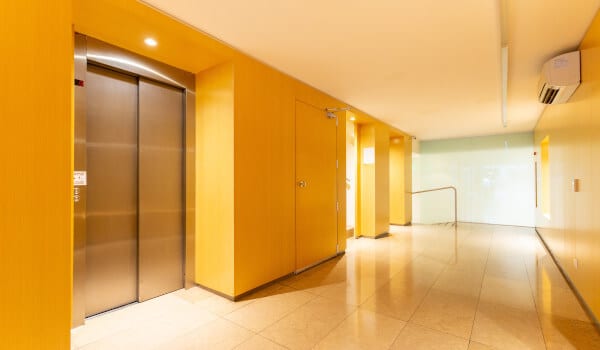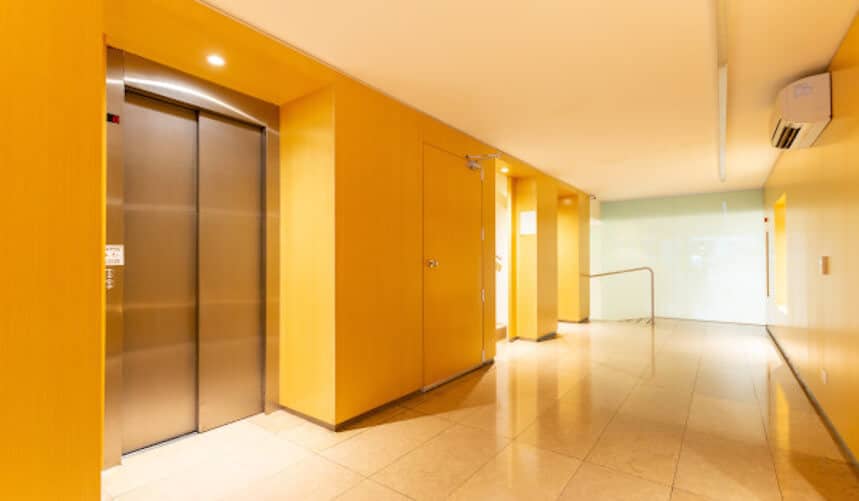
We know that physical distancing is a critical part of mitigating the spread of COVID-19 in the workplace. But what about small, common spaces?
From keeping employees an appropriate distance from each other to limiting the number of employees in the office at a time, there are many ways to approach physical distancing at work.
In this post, we’re taking a look at a few ways that facility managers (FMs) can manage small spaces to mitigate the coronavirus spread.
Essential things to keep in mind when managing small common spaces in the office
Before you start devising a plan to oversee the small common spaces, it’s important to keep a few variables in mind. These variables will not only keep these spaces safe but will make it easier for FMs to manage.
Cleanliness
Smaller shared spaces will warrant extra cleaning precautions, so make sure your cleaning team is thoroughly cleaning these areas every day, or perhaps multiple times a day if needed. Keep a meticulous cleaning schedule and log, so you always know when a space was last sanitized and cleaned.
Traffic flow
FMs need to make sure that high traffic areas are adequately managed to prevent accidental exposure. This could mean limiting the number of people in these spaces at a time or creating a traffic system to prevent too many people from assembling.
Signage and labeling
It’s essential to provide clear instructions for employees on how and when to use these spaces and leave nothing to interpretation. Clear signage and messaging can help keep these spaces safe for all and ensure that everyone understands what is expected of them.
Visual Directory®
A tool like an integrated workplace management system (IWMS) can help you regulate and monitor these spaces. A map of the workplace can be helpful when planning traffic flow, identifying your high-traffic areas, and more.
Now, let’s take a look at how FMs can manage small common spaces and create the safest work environment possible.
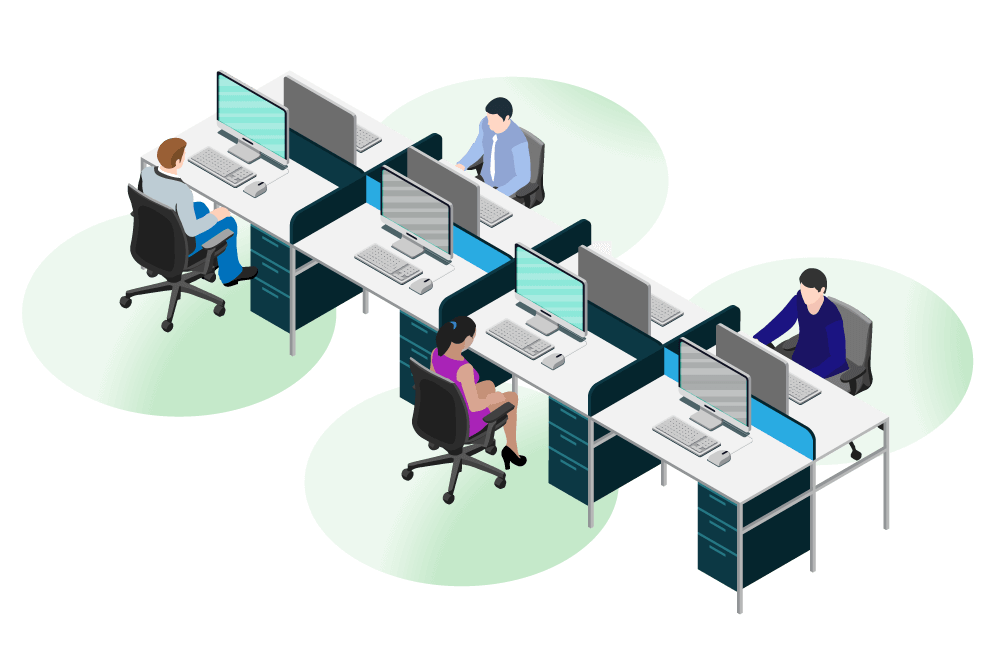
Elevators and stairs
The thought of riding in an elevator during a pandemic may make some employees uneasy. Even in normal times, riding in an elevator can be an awkward experience.
To ensure employees are appropriately distanced from one another when using elevators, FMs could implement several precautions:
- Tape distance parameters on the floors to indicate where employees should stand to remain compliant with physical distancing measures
- Limit the number of employees permitted in elevators at a time (this will depend on the size of your elevator); it’s estimated that 1-2 people will be allowed in each elevator
- Prioritize elevator use based on physical ability: those with physical disabilities will need elevators more than able-bodied employees who are able to walk up a staircase
- If a building has more than one staircase, ensure one is used for going upstairs and one is used for going downstairs; this will help prevent close contact from people passing each other
- Space out entries in staircases to ensure that people are at least six feet behind another person to help with physical distancing in small spaces
If your company employs a large number of people, consider hiring a dedicated elevator attendant to ensure people aren’t getting too close, are wearing proper PPE, and aren’t overcrowding the elevators. Due to the high-traffic nature and how physically close people are in an elevator, enhanced cleaning with regular frequency will be necessary to maintain safety.
Lobby and reception areas
In most offices, there is a reception or lobby area upon entering the suite. Though you likely aren’t allowing people who are not employees into the office at this time, it’s still important to make sure these spaces are clean and that they don’t result in a crowd.
Removing tables, chairs, and other surfaces that might encourage crowding can reduce the risk of lobby and reception areas. Also, eliminating items like magazines, business cards, and other paper products mean minimizing the opportunities for the virus to spread by touch.
If you are permitting non-employees in the office, adding six-foot placements on the floors to affirm proper distancing and signage to help provide direction can help manage traffic flow and prevent congestion. It’s crucial to enforce a PPE requirement for non-employees entering the building as well.
In terms of cleaning these spaces, pay extra attention to doors and door handles, windows, and other surfaces that people may touch (knowingly or unknowingly). These spaces will warrant extra cleaning if you are welcoming non-employees into the office.
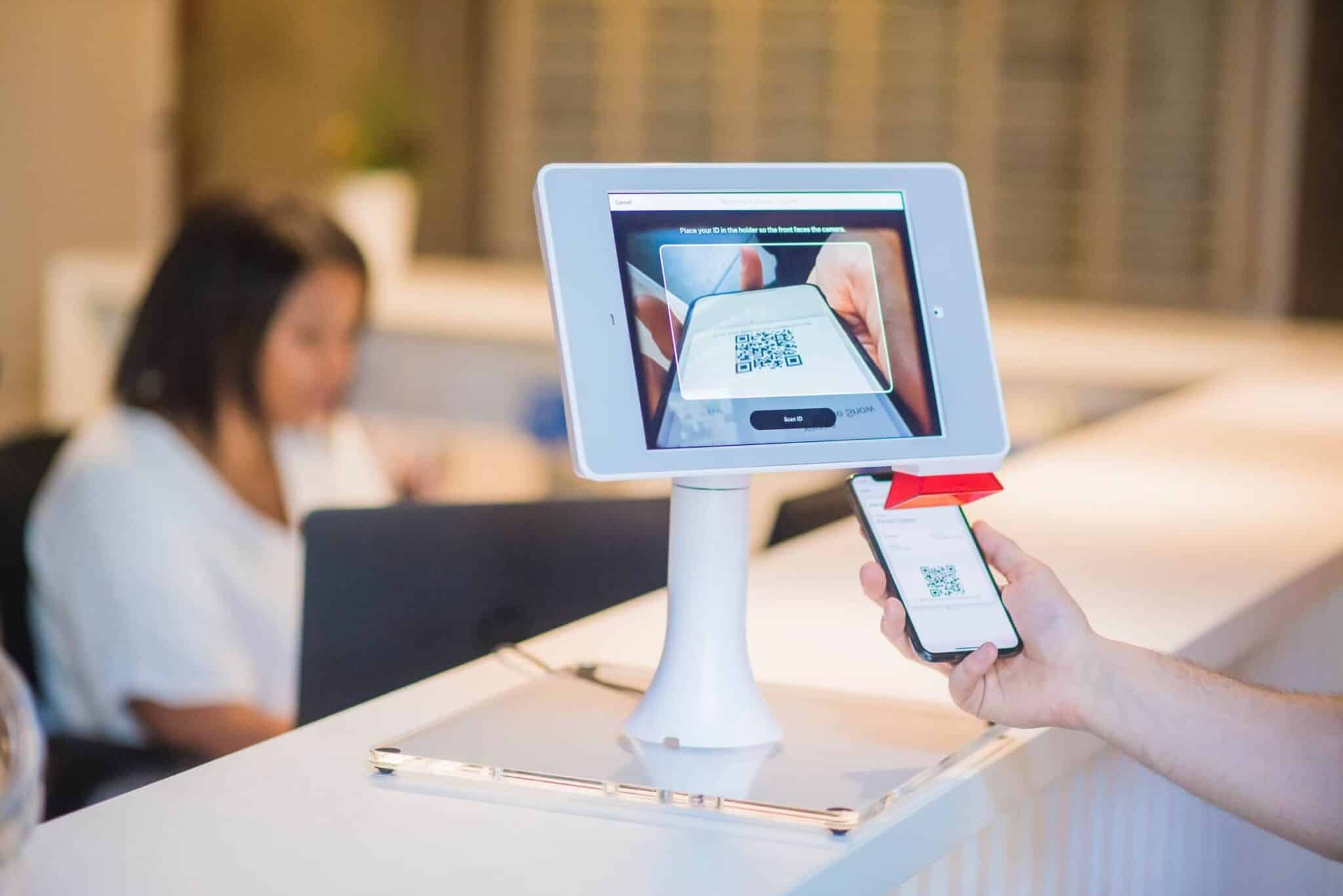
Kitchen and garbage
The kitchen, garbage, or recycling areas can quickly become a problem for FMs as everyone needs to eat!
If you want to keep your kitchen space open, making it safe to use goes beyond physical distancing. Eliminating the need to touch surfaces, like refrigerators, dishwashers, and other surfaces is a critical part of slowing the spread of the virus. If your garbage or recycling areas have doors, consider implementing motion-detection on the doors to prevent unnecessary touch, or keep them open with a doorstop.
Since people are eating in these spaces, it’s all the more important to make sure substantial precautions are in place. This could mean catering lunches for employees each day to reduce the need to bring outside bags, food, use microwaves, etc. Also, providing compostable cutlery and paper products can help reduce the spread of the virus.
If you’re implementing shift work and can keep the kitchen operational while maintaining a safe physical distance between employees, keep these precautions in mind:
- Make sure tables are correctly spaced
- Confirm there aren’t too many people in the spaces at once
- Maintain a consistent cleaning schedule
Depending on the configuration of these spaces and how many employees you have, it might make sense to close these spaces entirely and allow employees to each lunch at their desks instead.
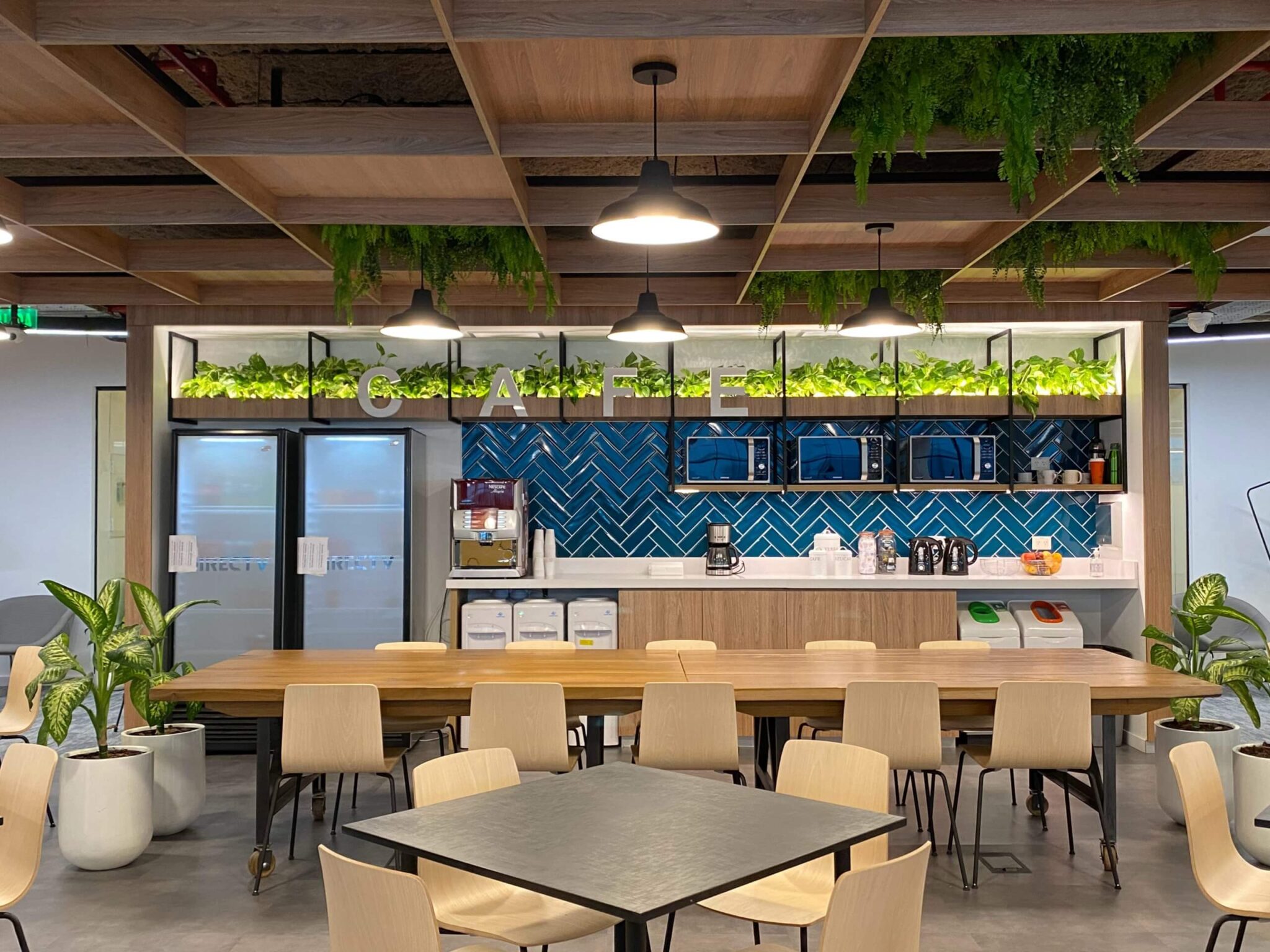
Bathrooms
Unlike the kitchen, the bathroom is one space that needs to be functional for employees to use. Therefore, extra precautions will be required to keep these areas safe and clean.
FMs should consider implementing various measures to help employees avoid close contact with each other as well as prevent excessive touch of surfaces. These measures could include the following:
- Eliminating the need for employees to touch things like door handles, toilet levers, doorknobs, and paper towel dispensers by adding motion sensors
- Implement bathroom passes to prevent overcrowding
- Closing every other stall and sink, so employees maintain an appropriate distance apart
- Taping the floor outside of the bathroom to create a line to avoid overcrowding
Depending on the size of your company, it may make sense to only allow a certain number of people in the bathroom at once. Extra, thorough cleaning procedures will need to take place daily if not multiple times per day because this is such a high traffic space.

Hallways
Similar to other shared spaces, the configuration of your office will determine how you should approach monitoring the hallways.
If you have narrow hallways, limiting the number of people who walk through them will help avoid unnecessary contact. If you have wide hallways, taping a line down the middle, like a two-lane road, could help employees walk safely through the building without risking accidental exposure.
Also, issuing hallway passes could be a practical option depending on your space. The primary goal is to reduce the number of individuals walking through the hallways while ensuring that those walking are maintaining their distance.
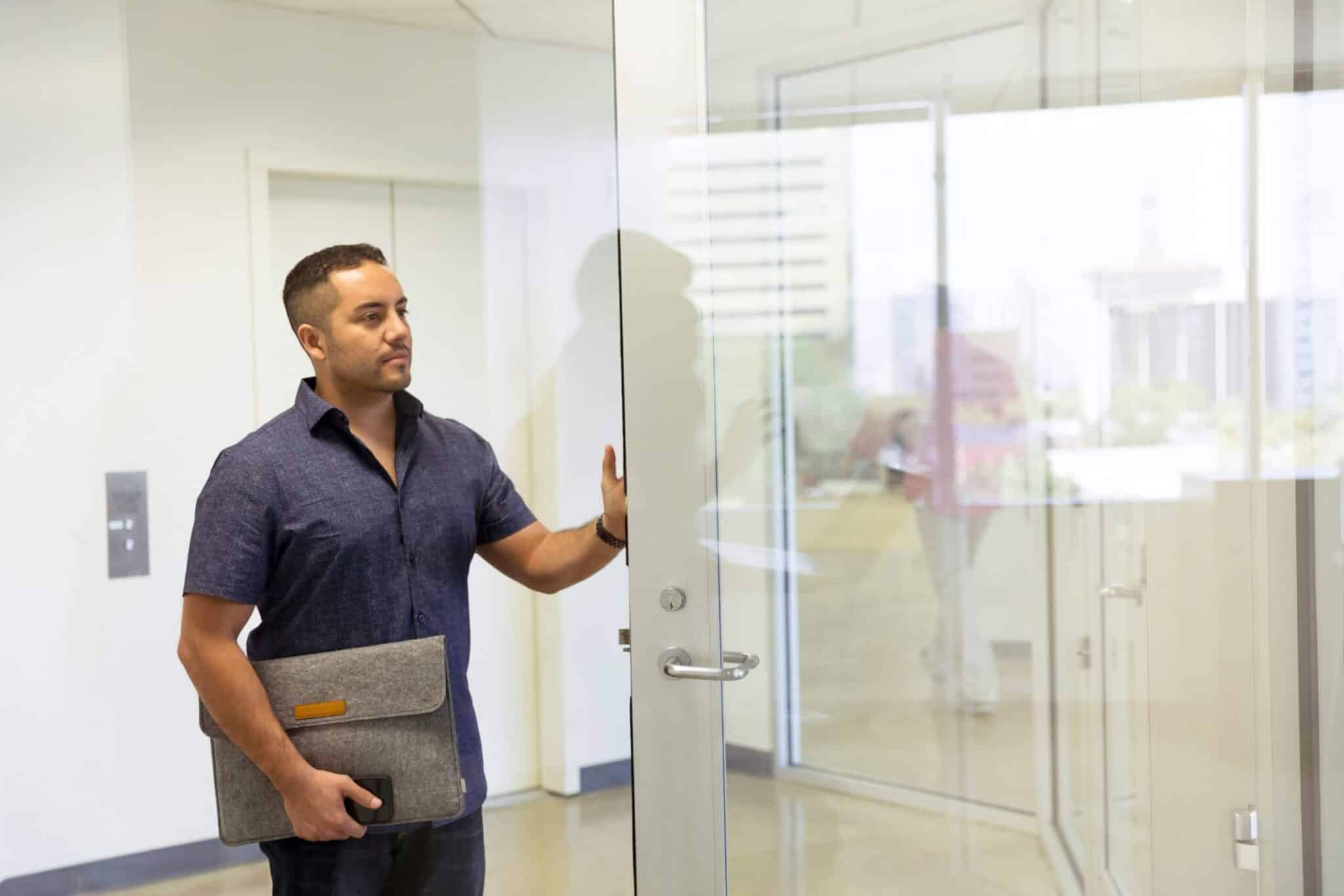
Small spaces, additional care
Small common spaces warrant extra attention and preparation due to the increased risk associated with using them.
Once you’ve created a plan for each space, make sure you communicate to employees how that space is intended to be used, what types of situations you want to avoid when using them, and where to go if they have any questions. Keeping the lines of communication open will encourage employees to speak up as well as ensure they understand these new expectations.
How is your company planning on reopening its office? Send us a tweet or let us know in the comments below.
Photo Credits: Fred Kleber, Matilda Wormwood, Proxyclick Visitor Management, Carolina Marinelli, Tim Mossholder, LinkedIn Sales Navigator, ProxyClick

